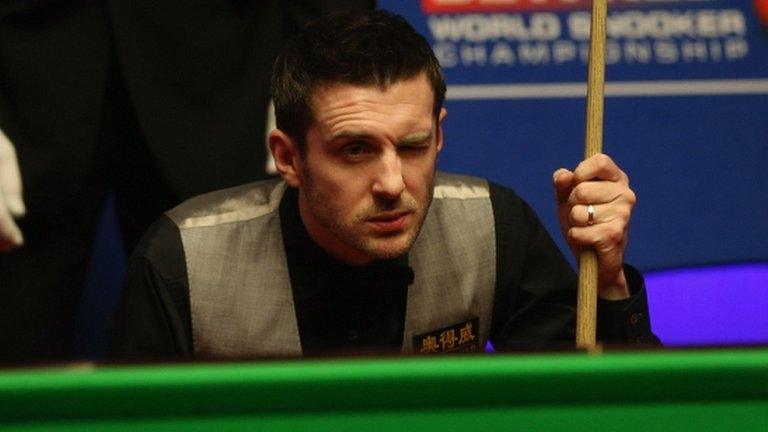The story of China's 'snooker king' Ding Junhui
- Published
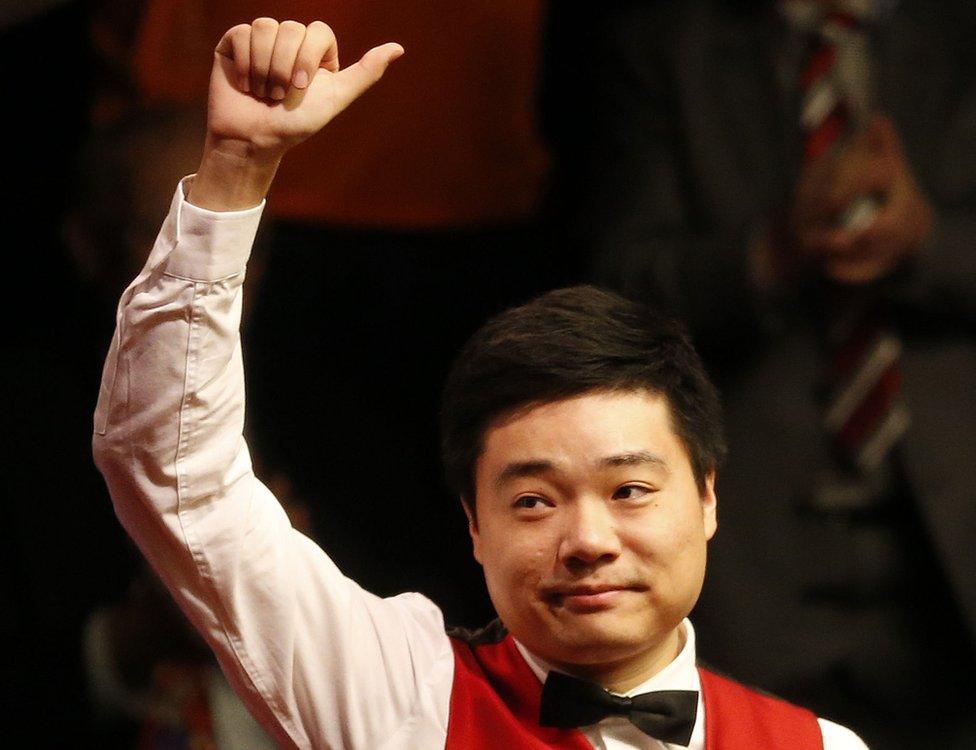
Ding became the first Asian to make it to the final when he beat Alan McManus in the semi on Saturday
Millions across China will be watching as Ding Junhui, tipped for stardom since he was a teenager, takes to the table for the closing session of the World Snooker Championship final.
Facing off against the UK's Mark Selby at Sheffield's Crucible Theatre on Monday, it will be the closest to world domination the 29-year-old has come after years on the international circuit. He is already the first Asian to make it this far.
The story of his rise begins with a fortuitous toilet break.
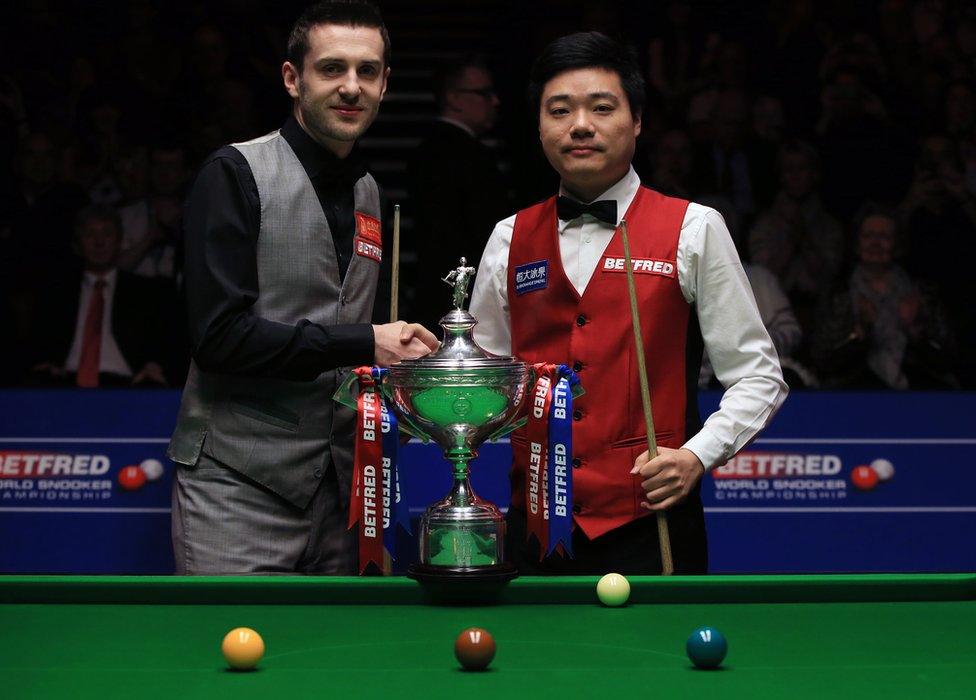
Selby (left) and Ding (right) will resume the final match on Monday afternoon in the UK
One day when he was eight years old, Ding tagged along with his pool enthusiast father as he visited a hall to hone his skills with a local pool expert, according to a profile on news portal NetEase.
It was there that the baby-faced aspirant, affectionately nicknamed "Little Ding" by the Chinese press, reportedly discovered his hidden talent.
When his father went for a toilet break, Ding decided to take over the cue and before the elder Ding returned he had won the game.
From then on, his parents steeped him in cue sports training, particularly in snooker which is popular in China.

Ding has nearly five million fans on microblogging network Sina Weibo
They sold their grocery business and house, and moved from Jiangsu province to Dongguan city in Guangdong province where Ding, who stopped his formal education at the age of 11, would practise for eight hours a day at a training hall.
By the age of 15, Ding began winning national and regional snooker youth championships, fast becoming China's top player.
The next decade was spent on the international circuit where he slowly climbed the rankings, becoming the world number two player by 2014.
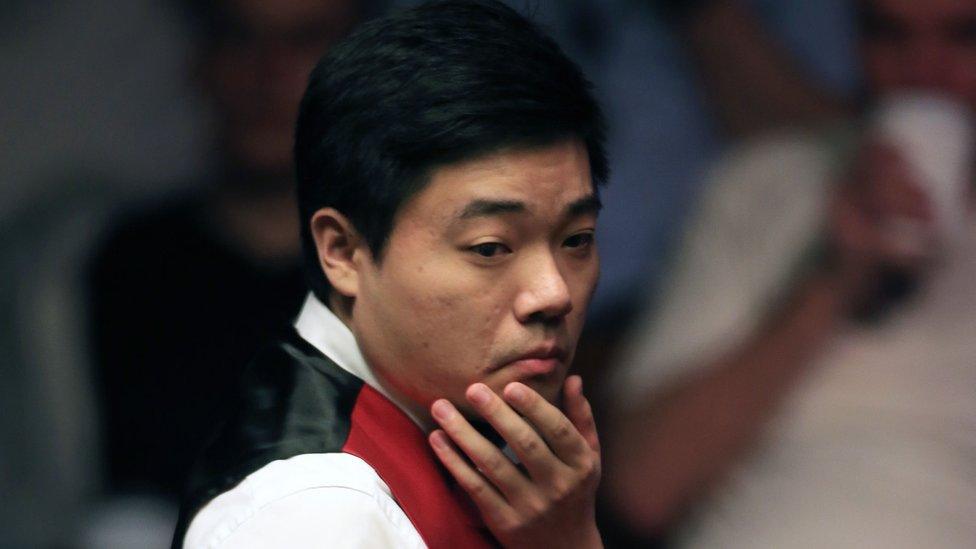
Ding appeared frustrated early on Sunday against Mark Selby after a missed pot
'Make that slap violent'
Ding's ascent this season has been watched closely in China, which has a massive snooker following - there are more people who play snooker in China than the rest of the world combined, according to World Snooker.
Televised snooker matches have an average audience reach of 79 million; and more than a quarter of TV viewers in China tuned in for Ding's last match on 1 May.
For the last sessions in the final, "they will be going crazy back home for this," Ding told Eurosport, external. "Around 100m people will be watching me, and this is the smallest figure probably."
Ding's 'very clever' deliberate mistake
On the popular microblogging network Sina Weibo, where Ding has nearly five million fans, Chinese netizens have flooded his page with expressions of support and pledge to stay up all night to watch him.
The best-of-35 final is set to resume late on Monday evening local time and last till the early hours of Tuesday. Selby held off Ding's fightback to lead 10-7 after a marathon first day.
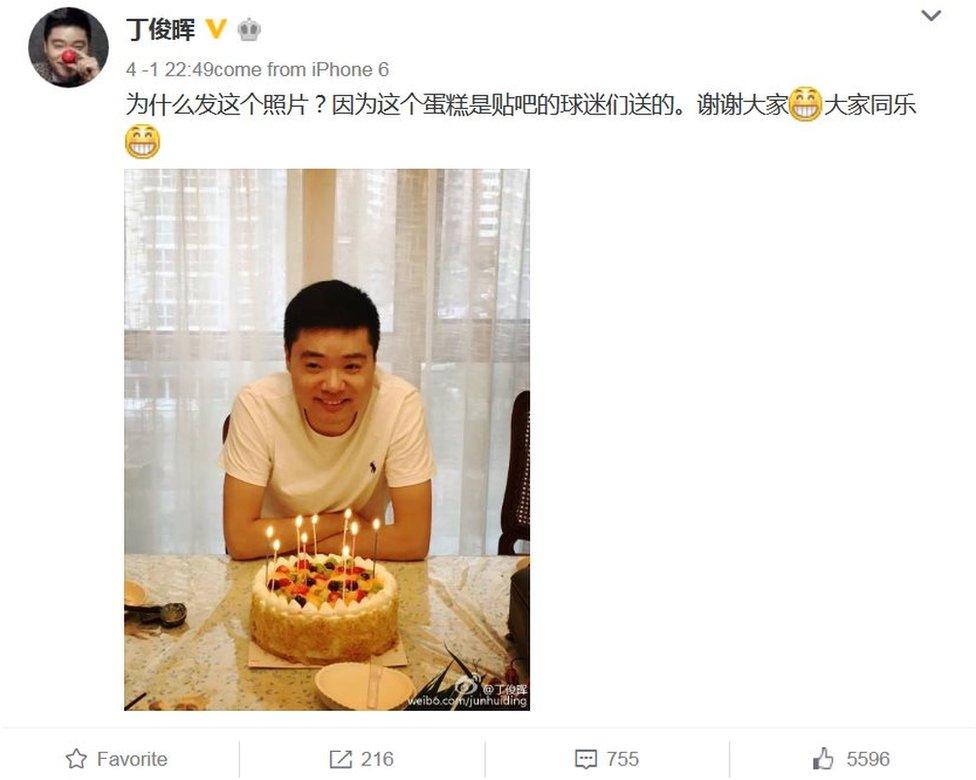
Ding is known to be an avid Weibo blogger who often interacts with fans; here he is seen posing with a cake given to him by fans
Hopes are high that he will win, despite some recent setbacks.
"Dingding, my heart hurts after seeing the last few rounds but I believe in a miracle, maybe we all need a miracle to happen. Tell yourself that all is possible, if you strive hard it won't be wasted," said one Weibo user.
Ding turned in a dismal performance at March's China Open, where he was eliminated in the qualifiers, shocking many in China. Even on the world championship's first day he appeared to falter due to nerves, but in the end managed to win seven frames while Selby had 10, out of the total of 35 frames.
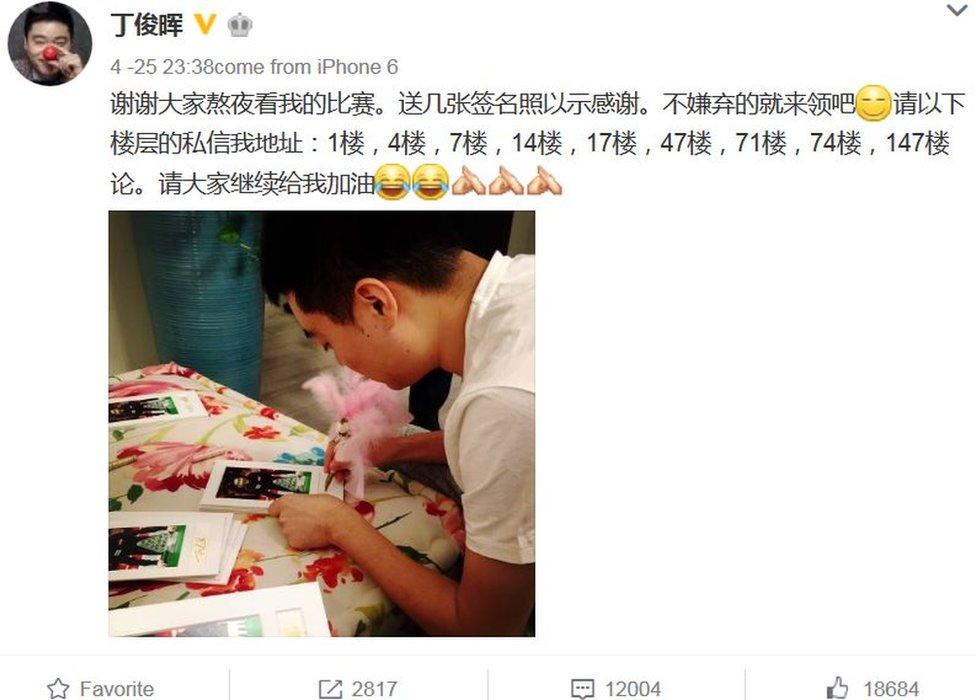
His latest post, dated 25 April, states: "Thank you everyone for spending the night to watch me compete. I'm autographing several pictures to say thank you."
It has not gone unnoticed by Chinese media, who have portrayed his qualification for the final as a startling but admirable comeback. One CCTV snooker commentator likened his performance to the Chinese proverb: "the ailing soldier wins the battle".
"These few years Ding Junhui has come close to the glory of being world number one, but also many times dallied with embarrassment," said one particularly pugnacious Beijing News commentary.
"But Ding is still a snooker player, his battleground is that 6m-long baize... when everyone had written him off, he suddenly made an explosive comeback, a totally unexpected explosion."
The commentary called for a decisive win: "We hope that in the final he can mercilessly slaughter Selby, and bring home the trophy... In the end a defeat is a slap in the face, so make that slap more violent."
- Attribution
- Published14 April 2016
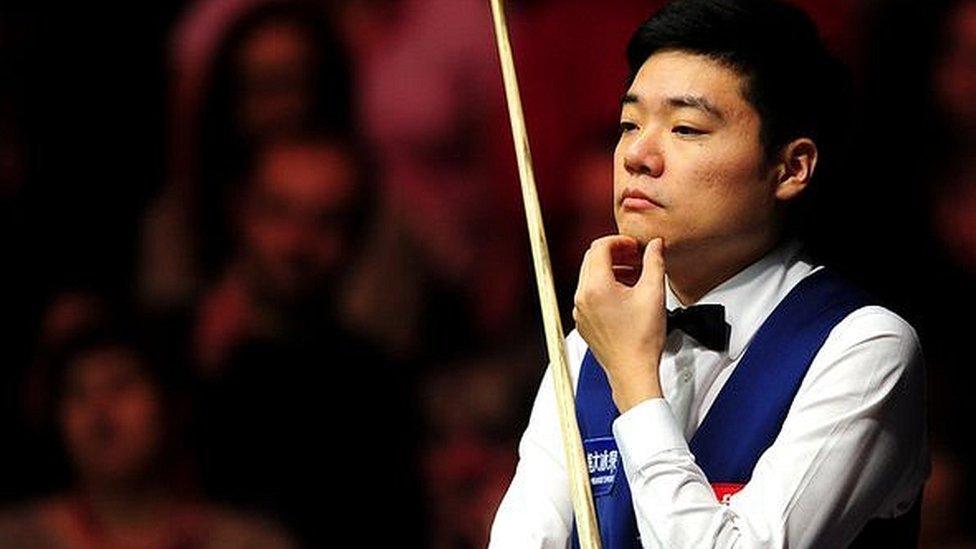
- Attribution
- Published24 April 2016
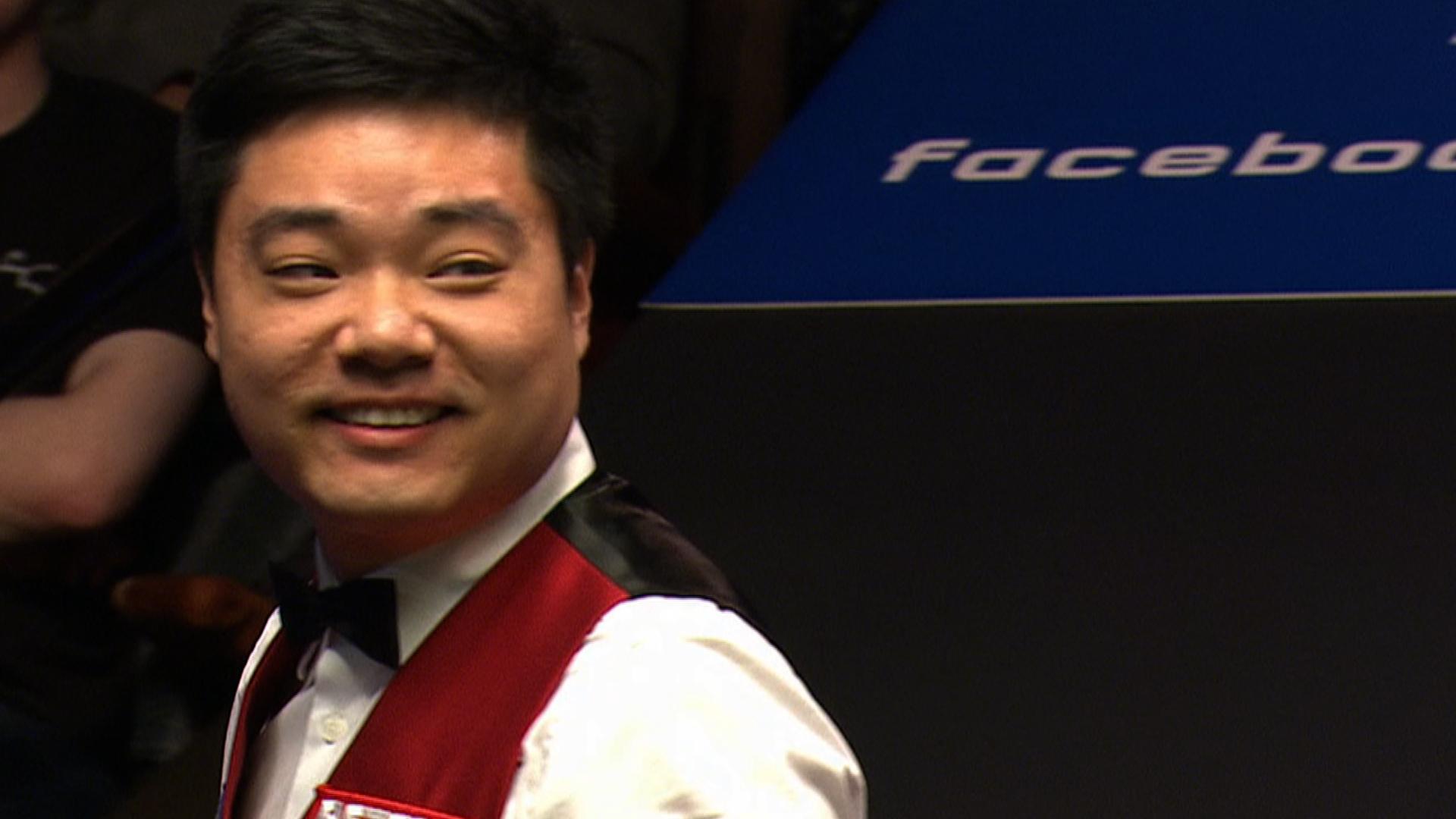
- Attribution
- Published20 April 2016
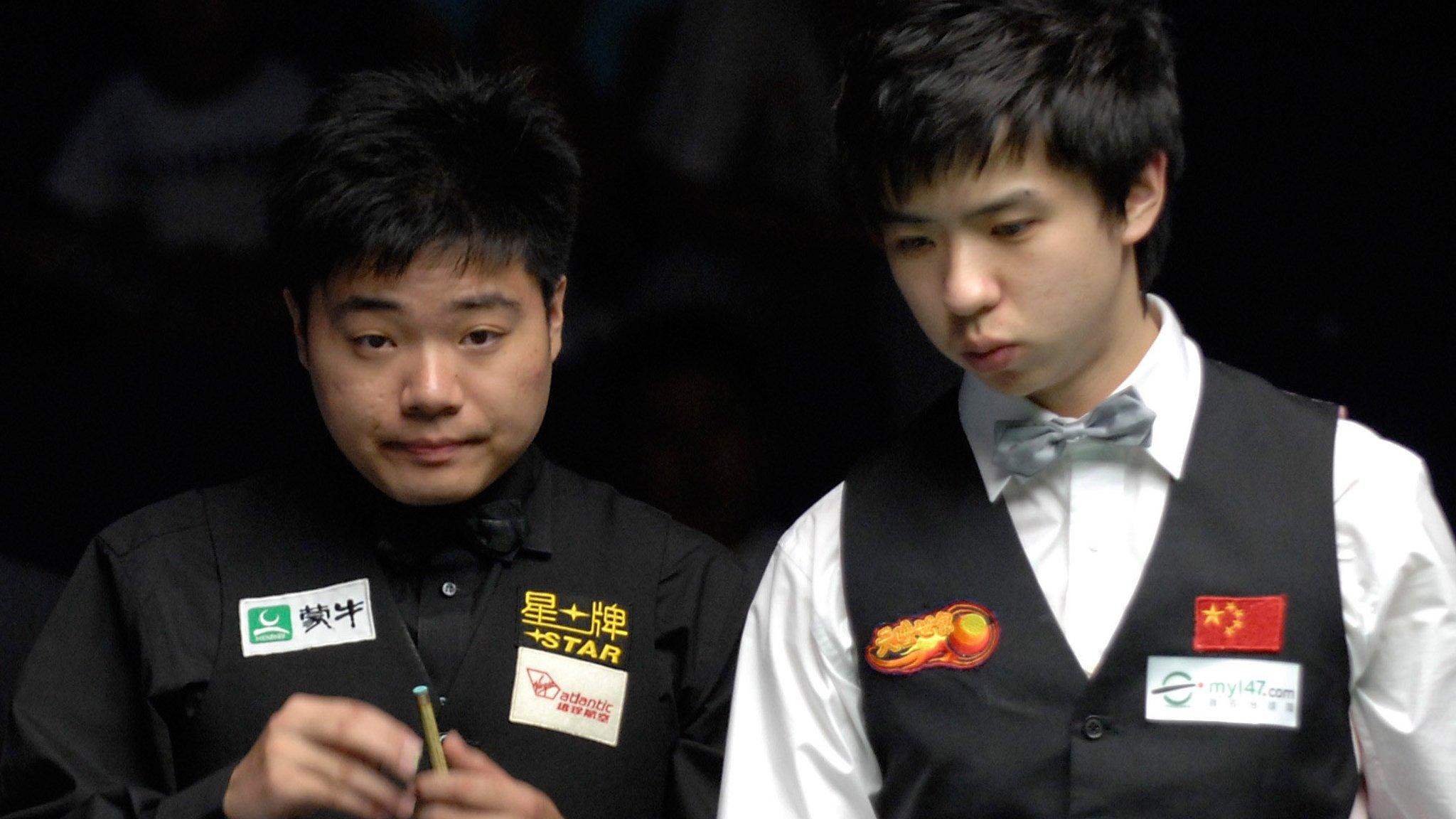
- Attribution
- Published2 May 2016
